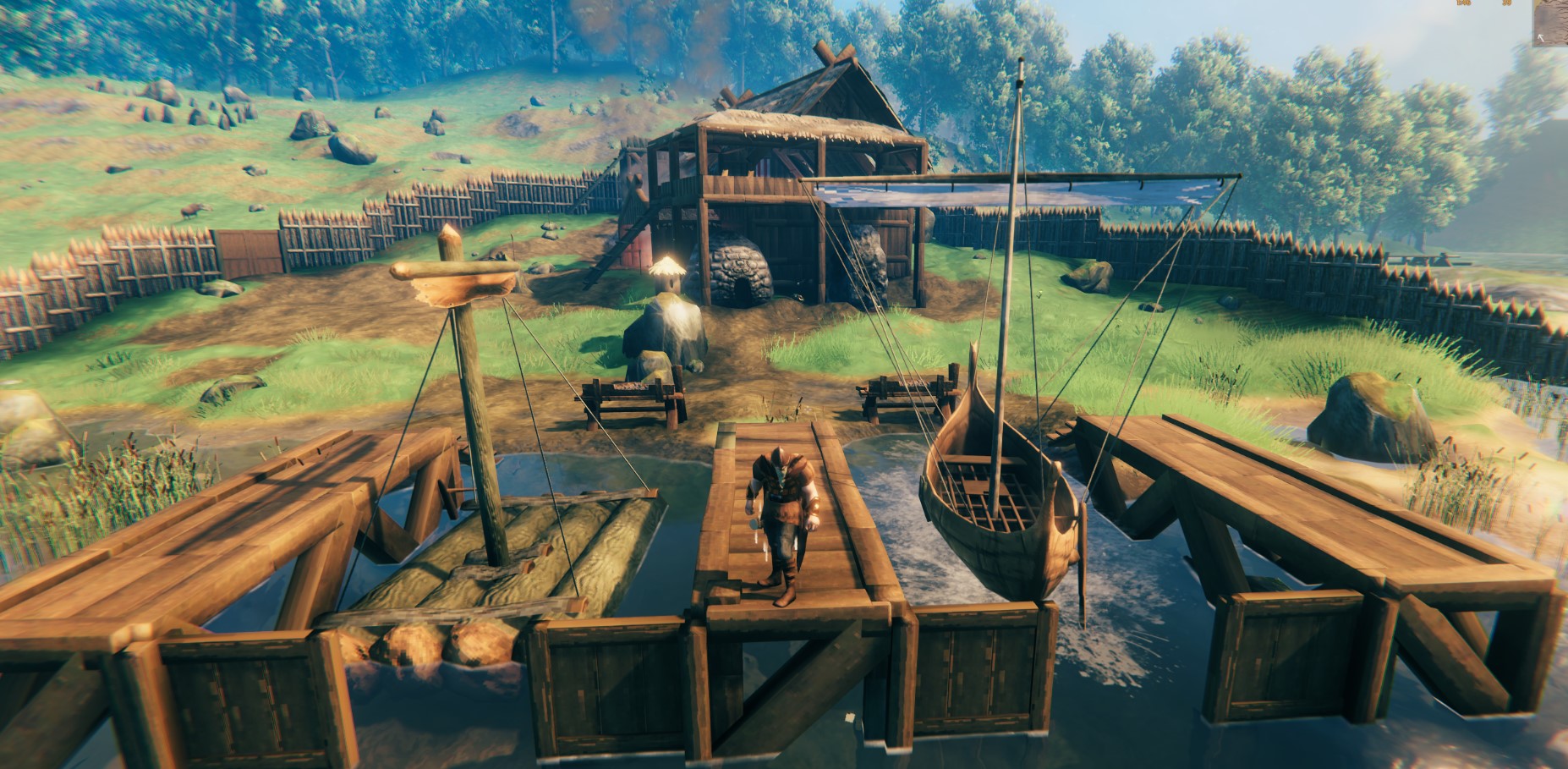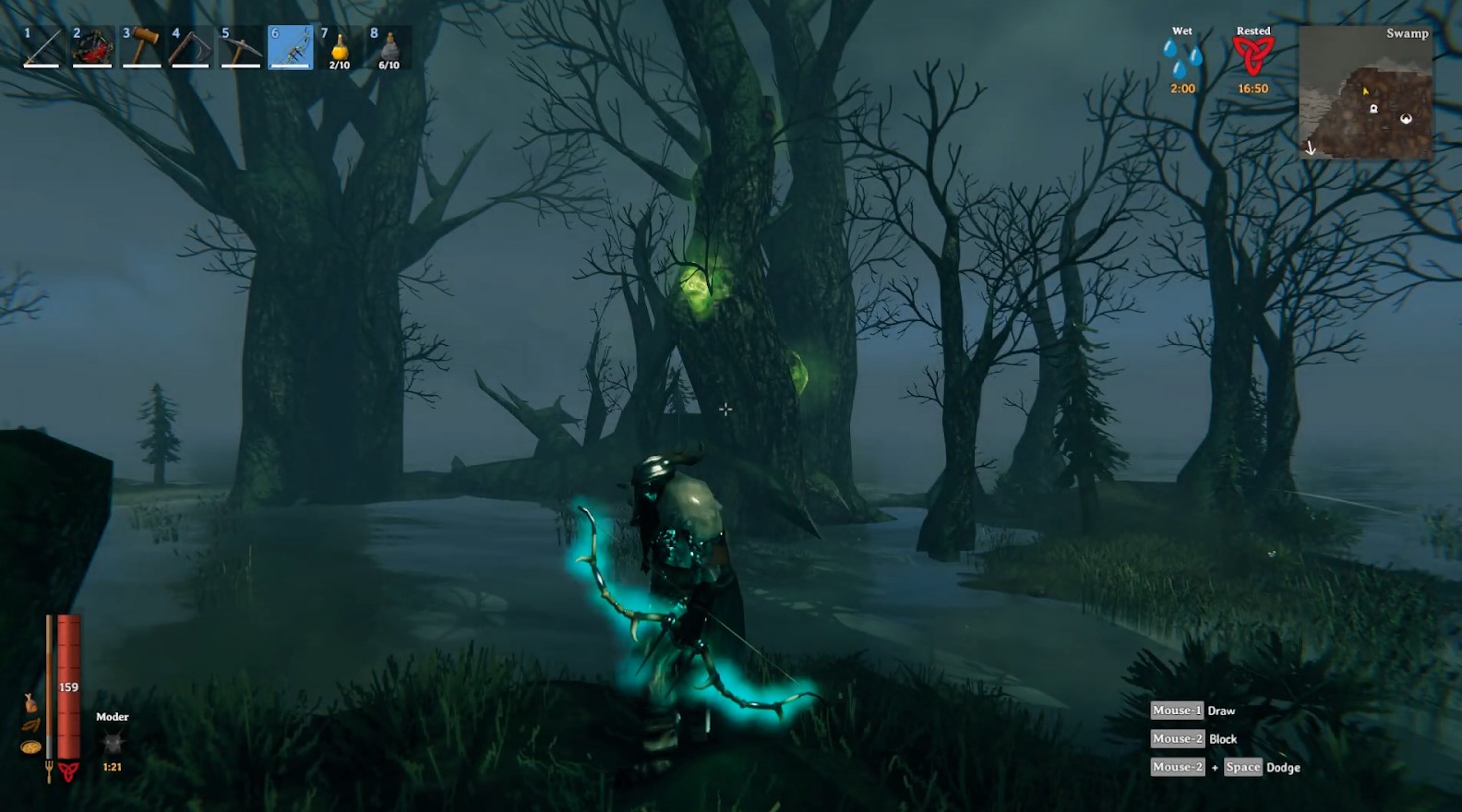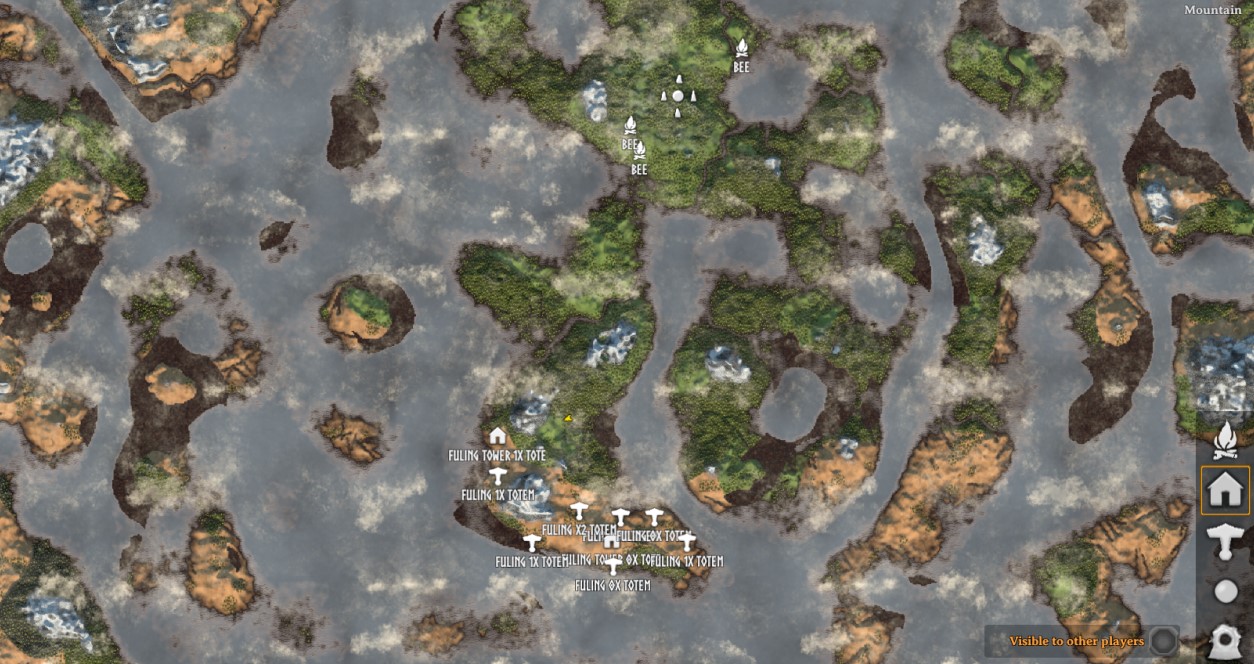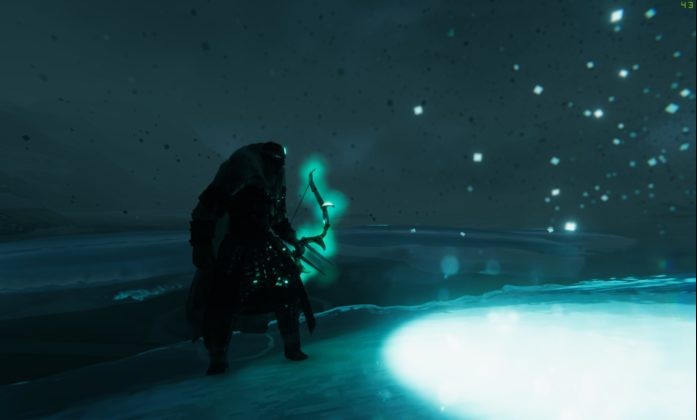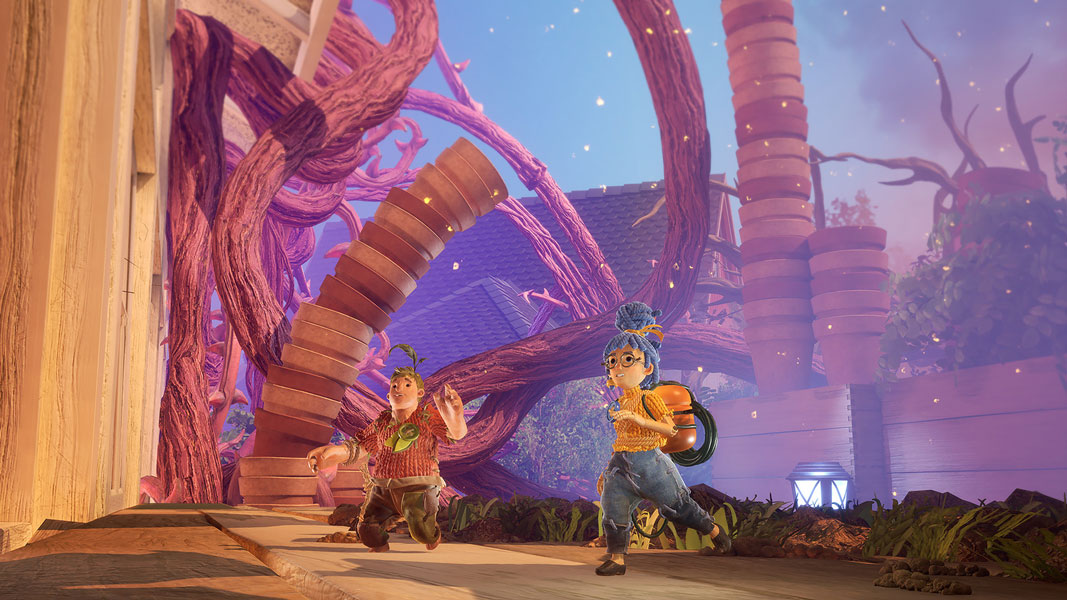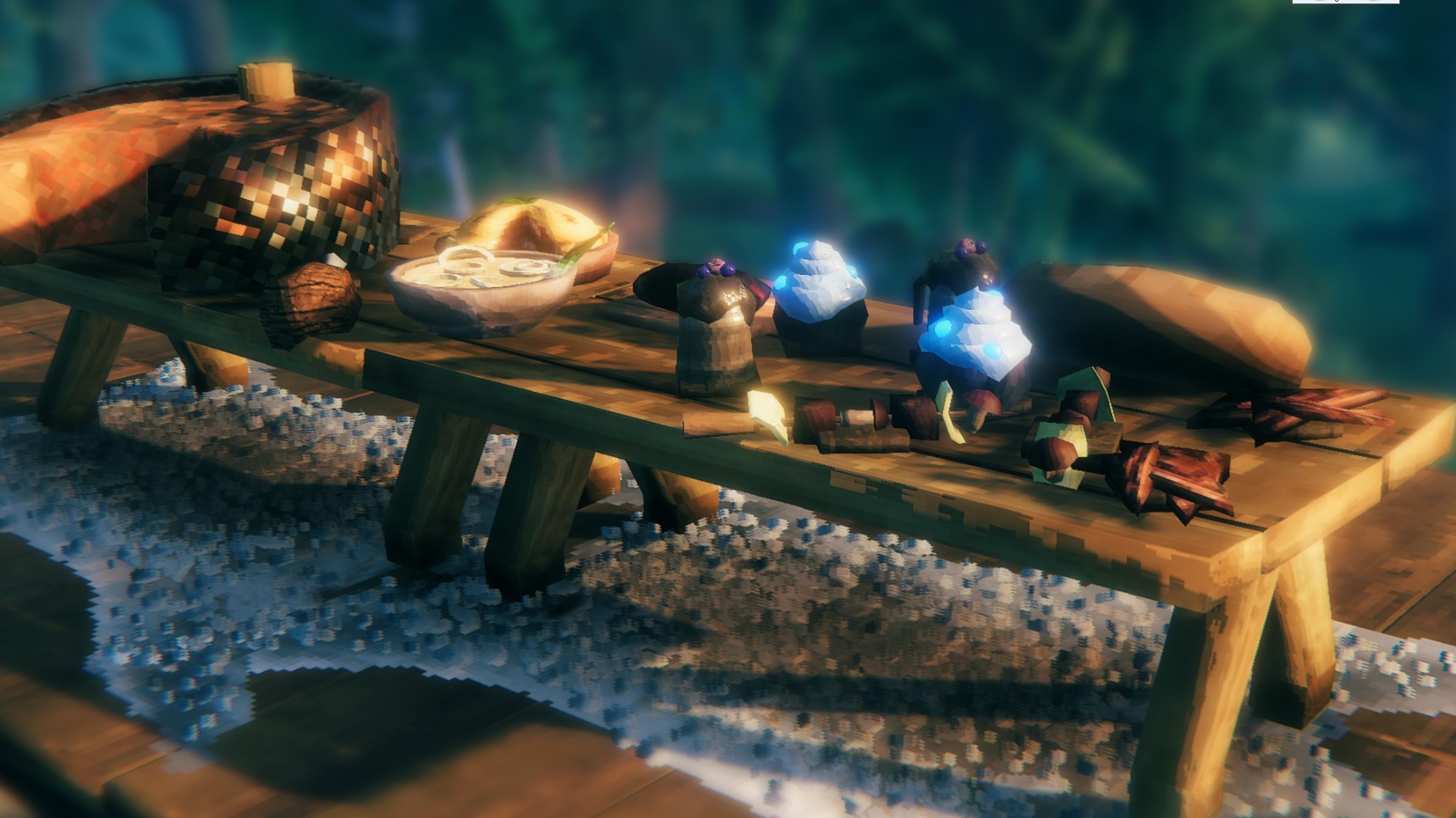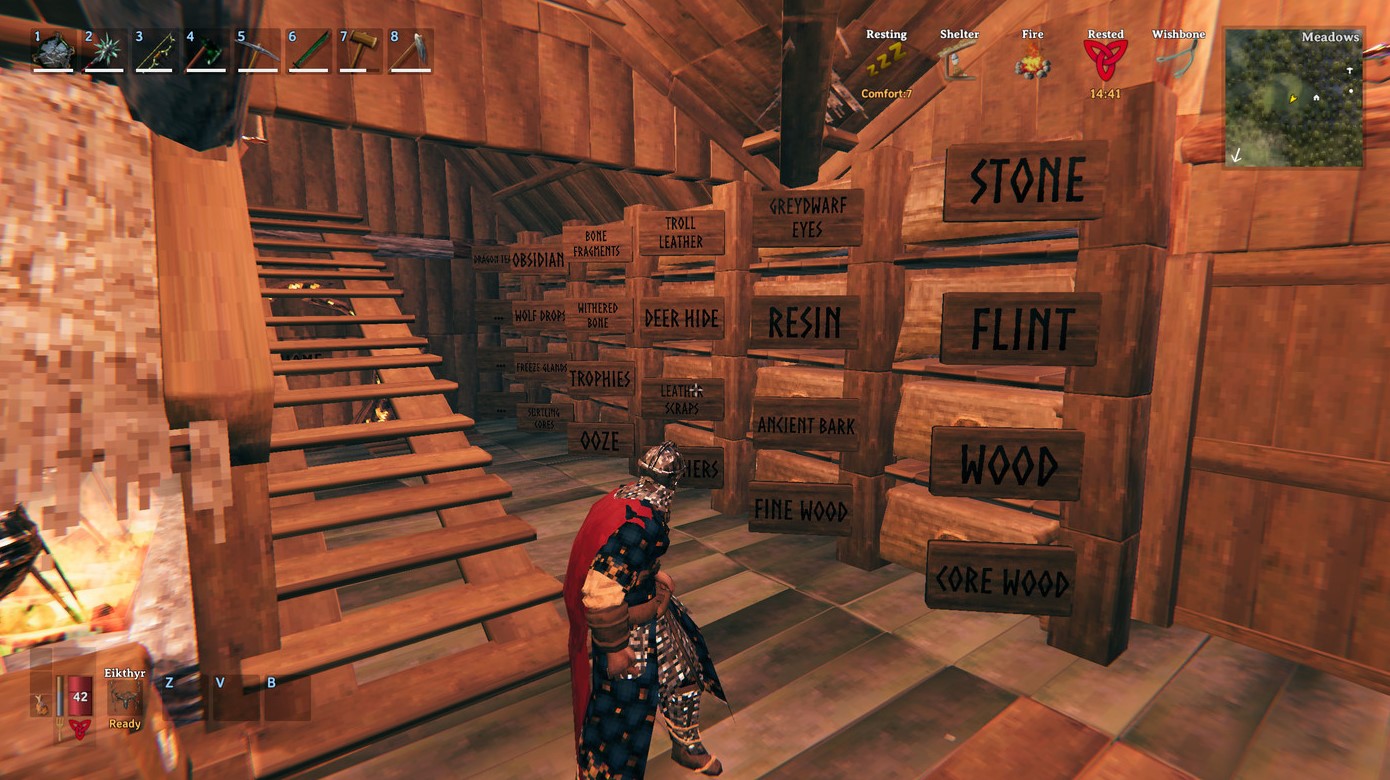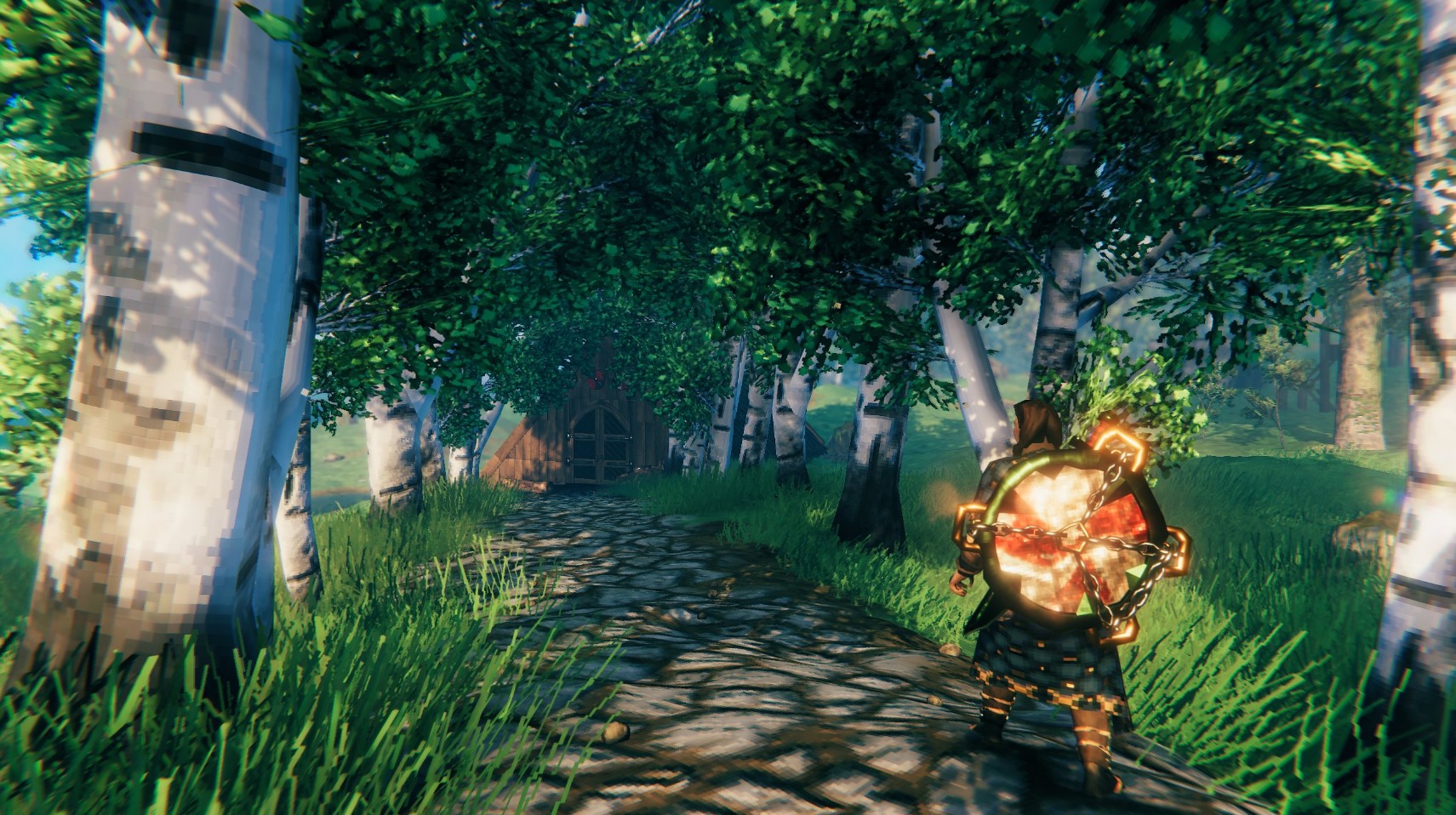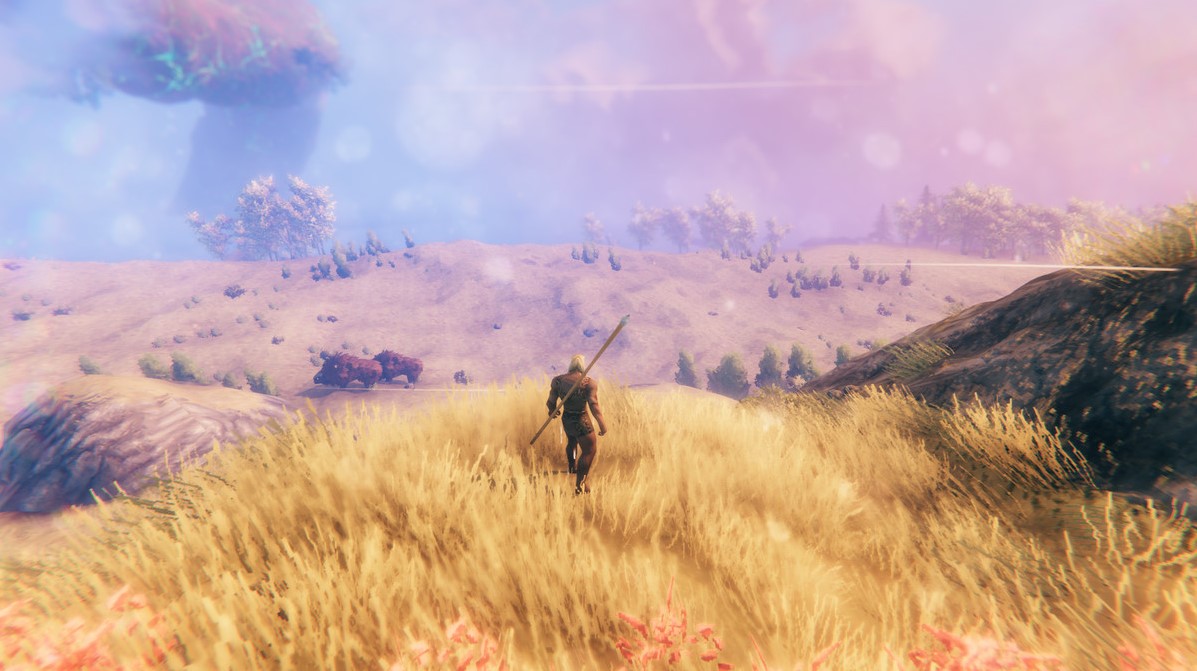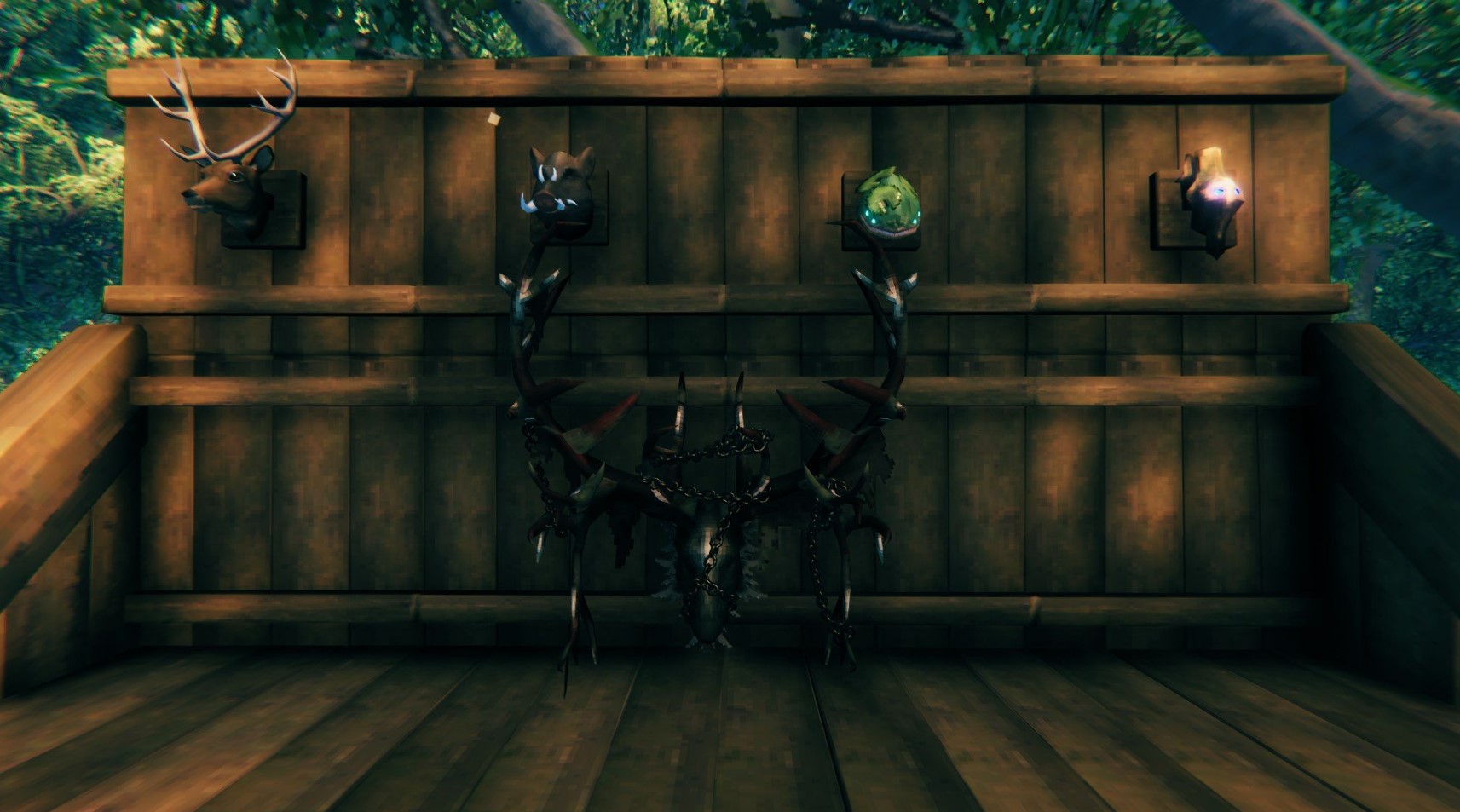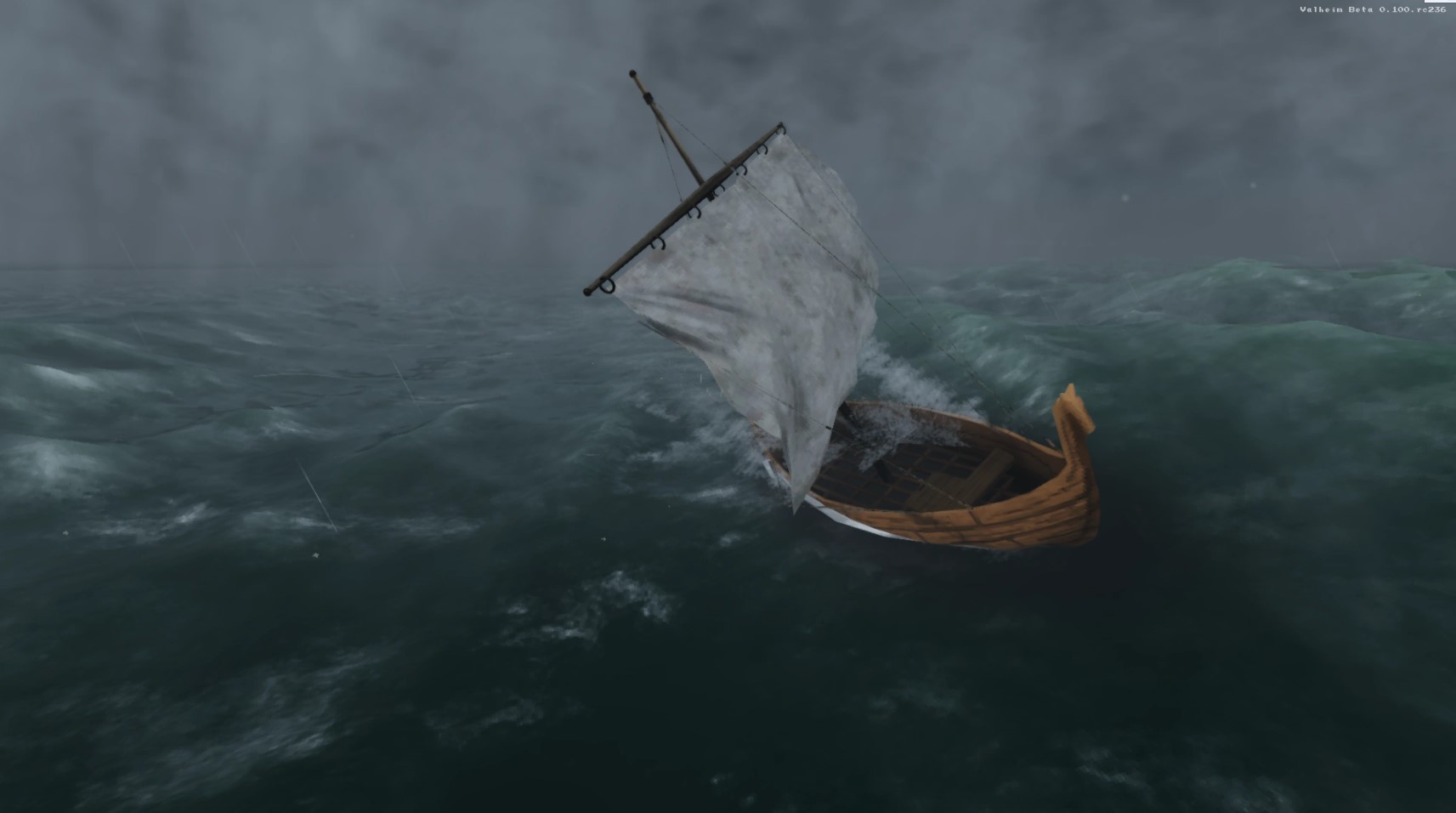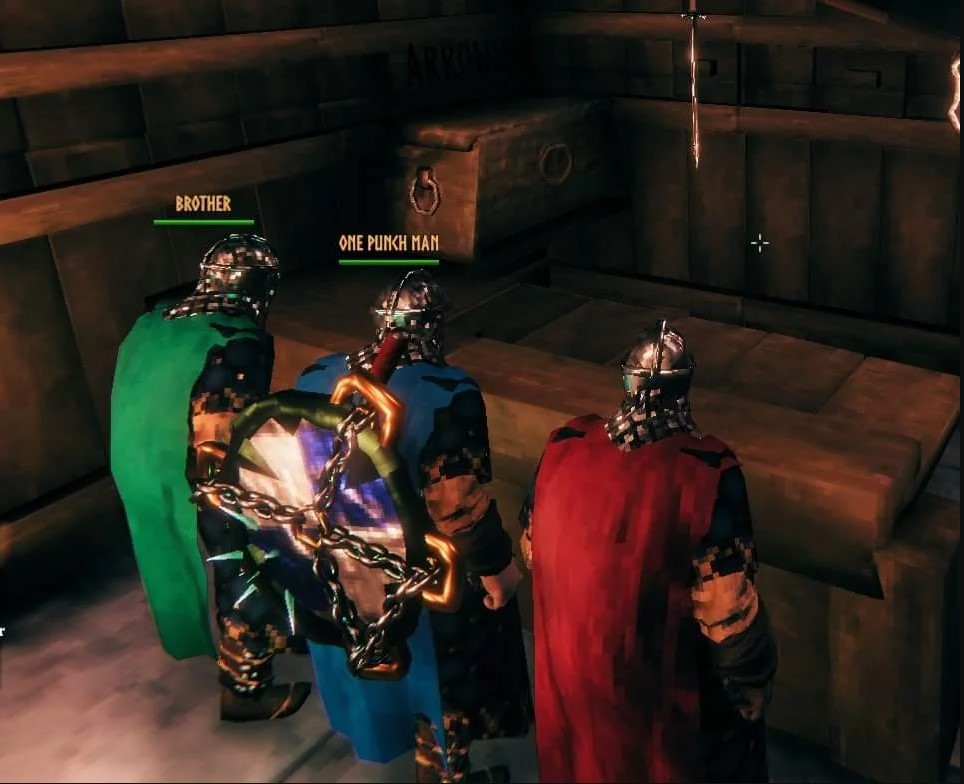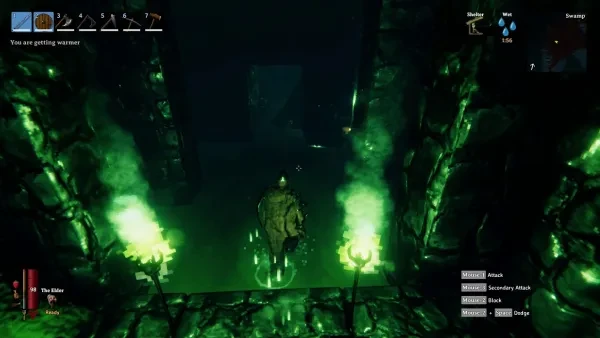
As a Valheim player, your main goal is to acquire a lot of metal to create weapons of mass destruction and the armor needed for survivability to kill the toughest bosses the game has to offer. To do that you’ll need to acquire the pickaxe, and like the regular axe, it’s more of a tool than a weapon. You need to grab a pickaxe when you plan on going out and about as you may want to haul the metal you’ve taken from a faraway place towards your smelting grounds, creating more ingots for whatever use that may be. As much as I’d love to talk about mixing and matching these pointy things, the game, in its current state only has 3 (yes, only 3) pickaxes that you’ll be able to get. Not much in the way of a scientific explanation of how good they are, but more of a good, better, best type of talk, which is what you’ll probably need anyway.
As with all Valheim lists, this was written at the time of the games’ latest version (Hearth and Home Update, version 0.203.10).
Now, to pick a winner.
3. Antler Pickaxe
The first pickaxe is by far the easiest to maintain, and surprisingly, with very few drawbacks
What is Good About the Antler Pickaxe?
By it being your first pickaxe, you’re also committing very little as it’s a byproduct of your quest, which we’ll get to in a bit. For now, the key things to know here are as follows.
Antler Pickaxe:
- Easy to make, provided you carry its materials
- Only pickaxe to be fixed via a crafting table
- Can break most of the materials you initially need
This is again, a basic pickaxe given its use, such as gathering stone, copper, and tin. It’s not intended to be a weapon, so if you happen to get a lucky hit while mining, don’t expect it to bury foes 6 feet under.
How to Get the Antler Pickaxe?
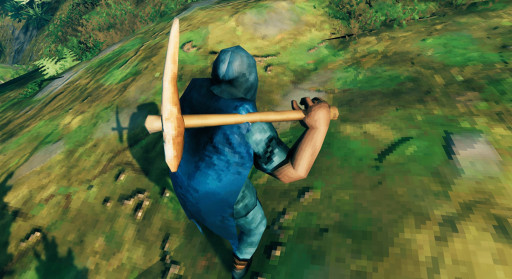
Antler Pickaxe:
- 1 Hard Antler
- 10 Wood
Wood is easy to get as it’s all around you, but the hard antler is a bit harder as the only way to obtain them is by killing the first boss, Eikthyr. By killing the boss, it will drop some hard antlers, depending on how many people attack it. It’s cut and dry basic, so with that in mind, if you want an inventory of Antler Pickaxes for some reason, it’s time to go big deer hunting.
For a detailed look at the pickaxes’ stats, you may look at the table or use the key points below.

- Damage Type: Pierce
- Mining Damage: 18
- Pierce Damage: 18
- Repair Area: Crafting Table
2. Bronze Pickaxe
Moving up to the first metal-based pickaxe, and arguably the one with the shortest-lifespan, the Bronze Pickaxe
What is Good About the Bronze Pickaxe?
This is still a very good pickaxe and does some decent things for you in the mid-game such as:
Bronze Pickaxe:
- Relatively attainable to fully upgrade
- Faster to mine materials compared to the Antler Pickaxe
- A good main pickaxe for things less than silver and obsidian
On paper, this is a better Antler Pickaxe, with its stats being better on key areas like durability and a bit more damage. Just know that you should be repairing it whenever a Forge is available to you, as that can seriously mess you up by taking up an inventory slot while being broken.
How to Get the Bronze Pickaxe?
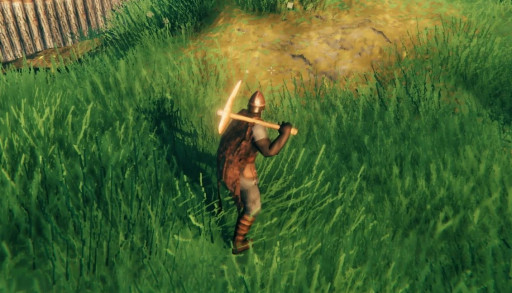
Bronze Pickaxe:
- 3 Core Wood
- 10 Bronze
We switch from wood to core wood, which is found in the Black Forest biome, and that is farmed by axing down a Fir tree. As for the metal, you’ll need copper and tin ores to create bronze. The ratio is 2 to 1, with copper being more used, and so to get that magical 10 bronze, you’ll need to smelt 20 bronze ores and 10 tin ores, which, like the core wood, is found in the Black Forest, but this time a little split up. You’ll get the tin near the waterside of the Black Forest, either a river or the sea, while the copper ores are those veiny rocks you find in the biome itself. Again, the irony is that you’ll need to gather those ores by using your existing Antler Pickaxe to get them, and afterward, you take them home to your smelter, and watch them turn into the ingots that make up the middle of this pickaxe trilogy.
For a detailed look at the pickaxes’ stats, you may look at the table or use the key points below.
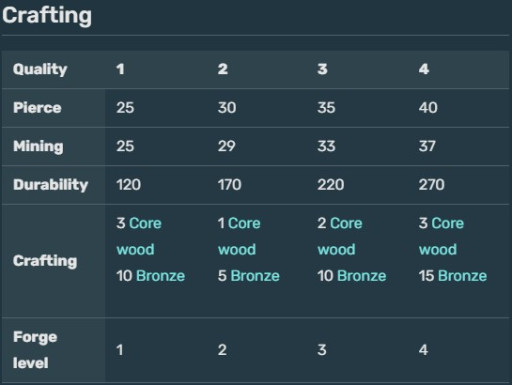
- Damage Type: Pierce
- Mining Damage: 25
- Pierce Damage: 25
- Repair Area: Forge
1. Iron Pickaxe
Unfortunately, the list ends with the Iron Pickaxe, and currently it is the best pickaxe you can craft in the game, for both good and bad reasons.
What is Good About the Iron Pickaxe?
Not much to say but it’s the best pickaxe in the game, specifically it achieves the following:
Iron Pickaxe:
- Can also pick and mine the same things as the previous two pickaxes at faster speeds
- Only pickaxe to be able to mine obsidian and silver
- Insane durability when fully upgraded
Given how it’s the last pickaxe in the game, it’s by default the best, but I can’t help feeling that given the best weapons in-game use black metal, I’m a bit confused as to why a Blackmetal Pickaxe doesn’t exist. Even the previously useless crystals that you get from stone golems can now be a Crystal Battleaxe, so why not a pickaxe equivalent? I’m sure Irongate has heard these things before, so let’s just see where it goes from here.
How to Get the Iron Pickaxe?
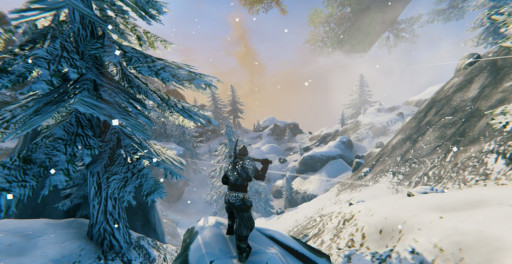
Iron Pickaxe:
- 3 Core Wood
- 10 Iron
Just as simple as the Bronze Pickaxe before it, only needing the same core wood, but swapping the bronze for iron. You don’t need two separate ores this time around, as this time you’ll find iron scraps in the Swamp area, mostly in crypts you unlock there. Also surprising is that even an Antler Pickaxe can dig the muddy scrap, and given how the Bronze Pickaxe needs a forge to be fixed, you’re better off having that instead of the Bronze Pickaxe, which again, attests to the short lifespan of the latter of the two. Once you do craft it, you’re likely to abandon both anyways, as it’s just superior in both use and materials you can pick out. It does damage but honestly, it’s not a stat worth keeping in mind, so for your picking needs, the Iron Pickaxe is the sharpest point in this list.
For a detailed look at the pickaxes’ stats, you may look at the table or use the key points below.
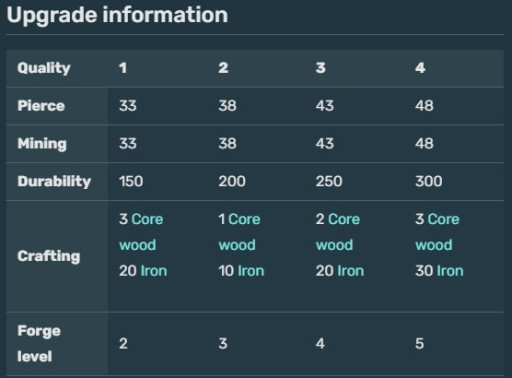
- Damage Type: Pierce
- Mining Damage: 33
- Pierce Damage: 33
- Repair Area: Forge


